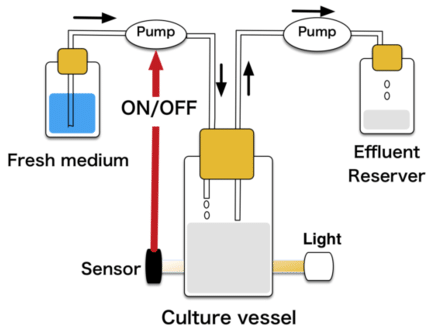L07 Microbial Growth Control
一、Principles of microbial control
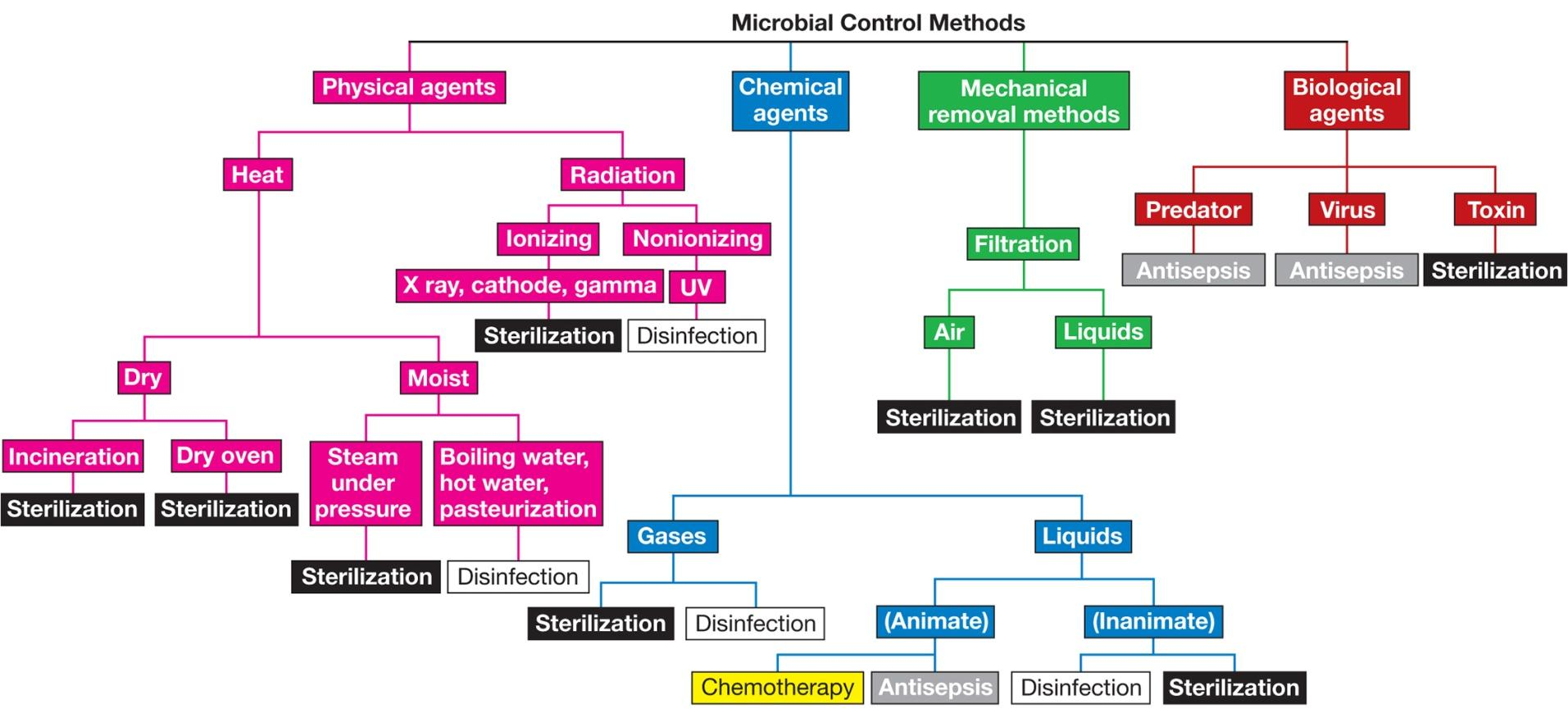
Definition of Frequently Used Terms
1. Sterilization 杀菌
destruction or removal of all viable organisms
2. Disinfection 消毒
killing, inhibition, or removal of disease causing (pathogenic) organisms (not bacterial endospore)
disinfectants
usually chemical
usually used on inanimate (无生命的) objects
3. Sanitization 清洁
reduction of microbial population to levels deemed safe (based on public health standards)
4. Antisepsis 抗菌
prevention of infection of living tissue by microorganisms
antiseptics
- chemical agents that kill or inhibit growth of microorganisms when applied to tissue
5. Comparisons of The Four Method
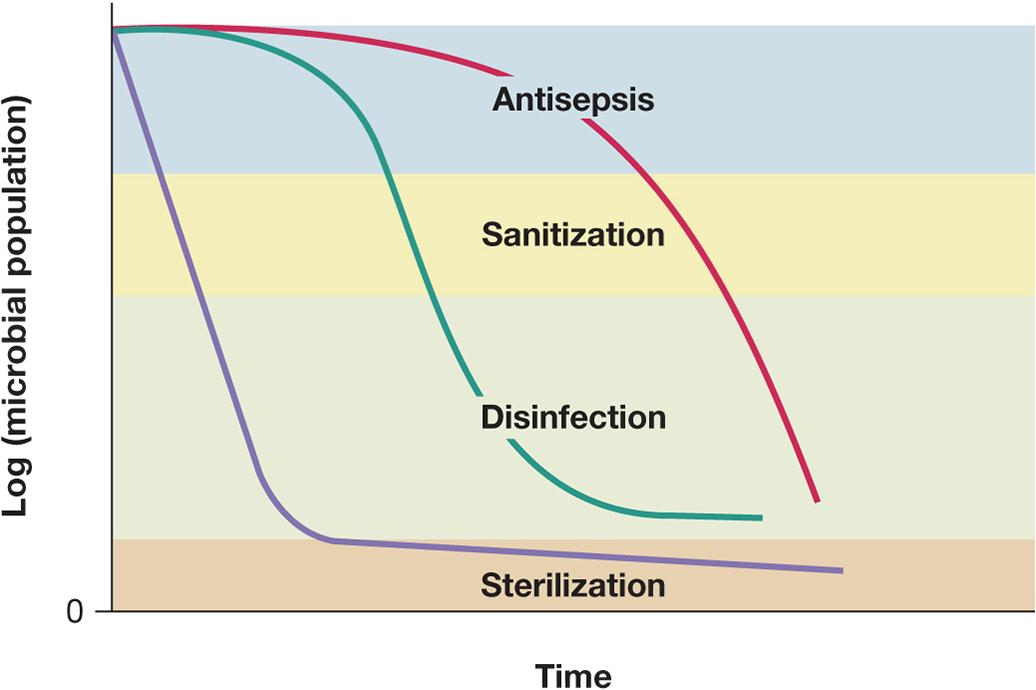
Antimicrobial Agents
1. Chemotherapy
use of chemicals to kill or inhibit growth of microorganisms within host tissue
Agents that kill microorganisms or inhibit their growth
cidal agents(杀菌剂) kill (bactericides)
static agents(抗菌剂) inhibit growth (bacteriostatic)
The Pattern of Microbial Death
Microorganisms are not killed instantly
Population death usually occurs exponentially (指数的,幂数的)
Measure of agent’s killing efficiency: decimal reduction time (D Value) – time to kill 90%
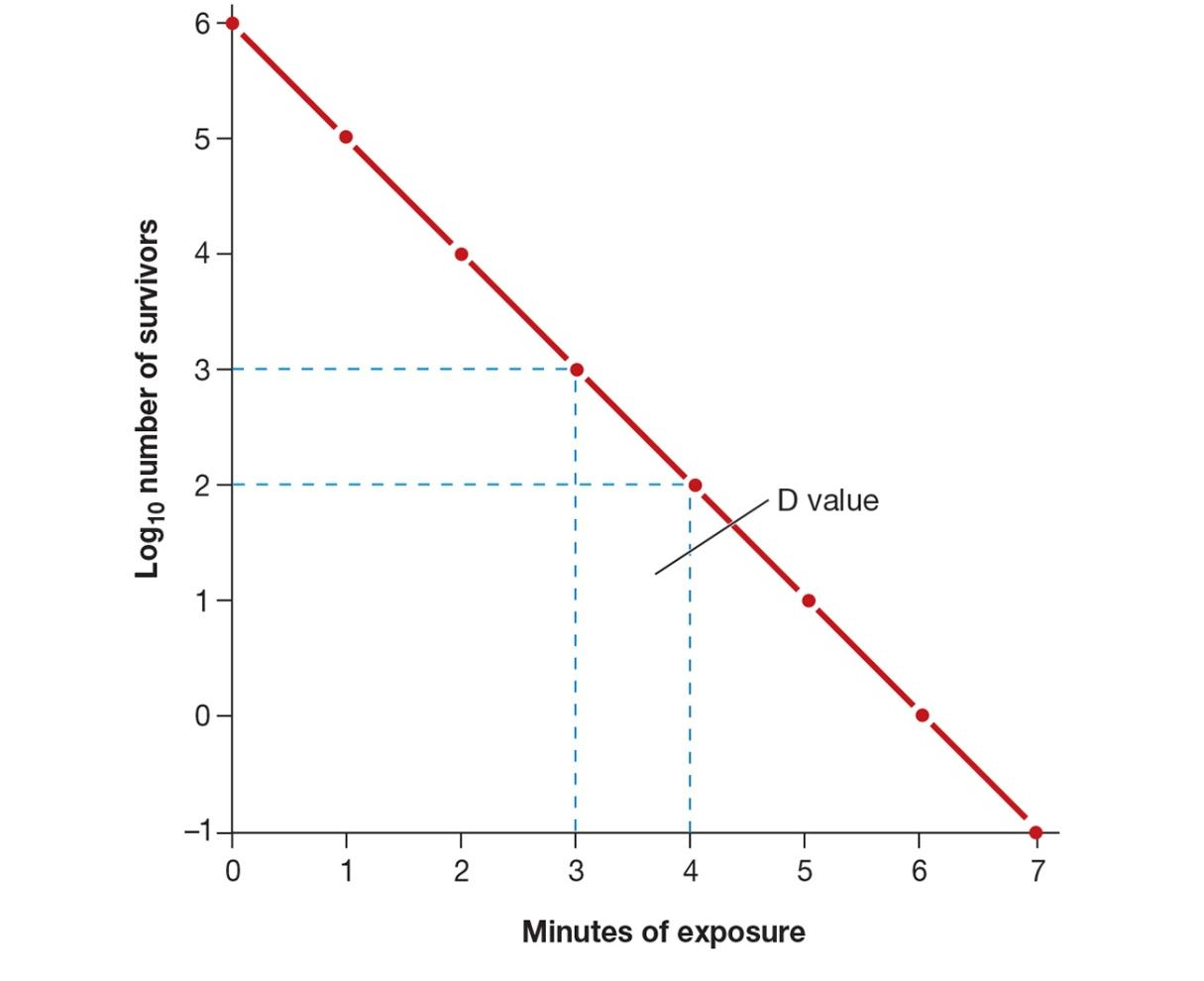
Conditions Influencing the Effectiveness of Antimicrobial Agent Activity
Population size
- larger populations take longer to kill than smaller populations
Population composition
- microorganisms differ markedly in their sensitivity to antimicrobial agents
Concentration or intensity of an antimicrobial agent
- usually higher concentrations kill more rapidly
Duration of exposure
- longer exposure → more organisms killed
Temperature
- higher temperatures usually increase killing
Local environment
- pH, viscosity, concentration of organic matter, etc. can profoundly impact effectiveness
- organisms in biofilms are less susceptible to many antimicrobial agents
二、Mechanical removal methods
Filtering Liquids
Membrane filters
- porous(能渗透的;有气孔的;多孔渗水的) membranes with defined pore sizes
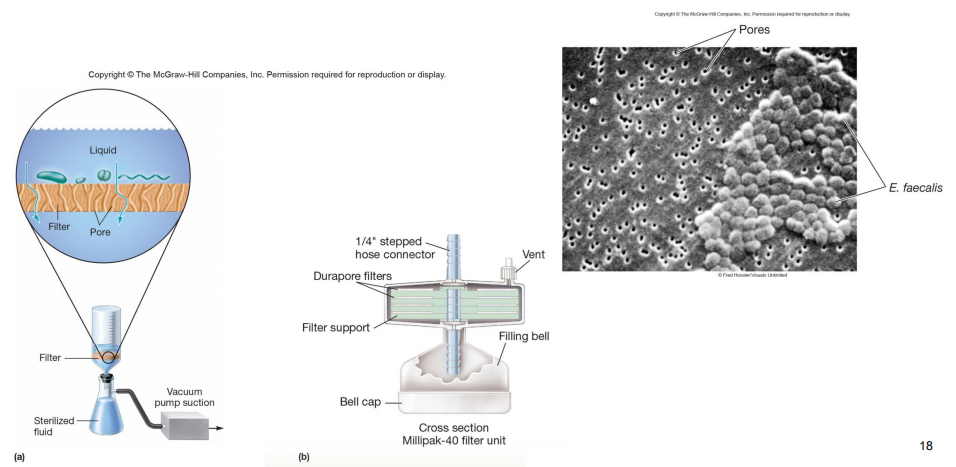
Filtering Air
Surgical masks
Cotton plugs on culture vessels
High-efficiency particulate air (HEPA) filters
- used in laminar(薄片状的) flow biological safety cabinets
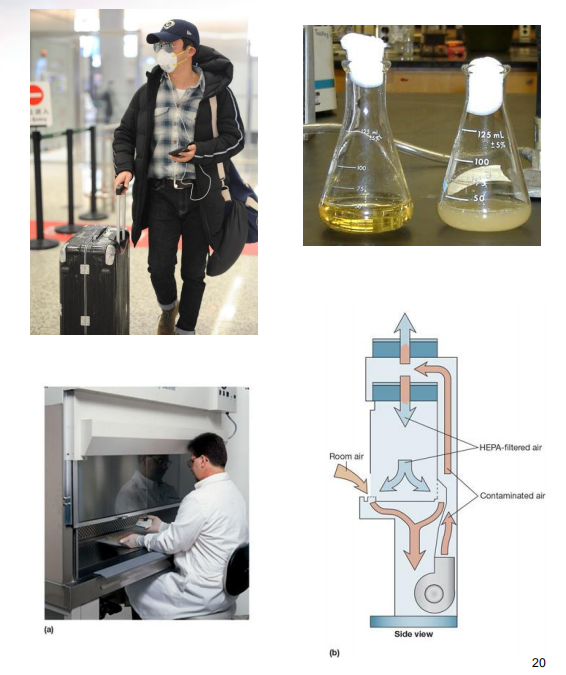
三、Physical Control Methods
Heat
1. Moist Heat 湿热
Destroys viruses, fungi, and bacteria
Boiling will not destroy spores and does not sterilize
Degrades nucleic acids, denatures proteins, and disrupts membranes
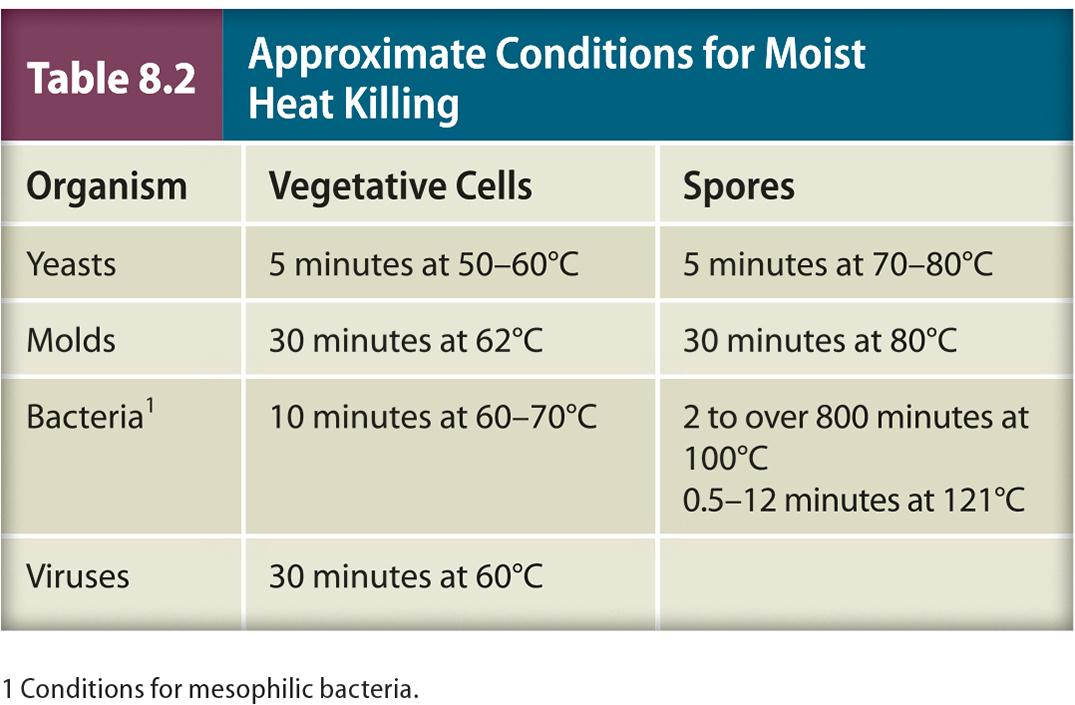
2. Steam Sterilization 蒸汽灭菌
Carried out above 100°C which requires saturated steam under pressure
Uses an autoclave (高压蒸气灭菌器)
Effective against all types of microorganisms (including endospores!)
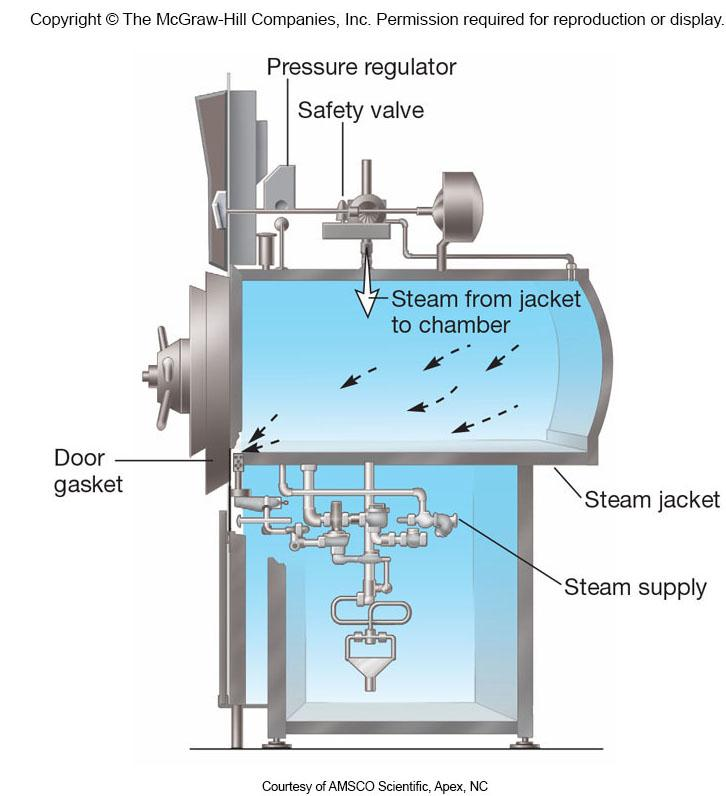
3. Pasteurization 加热杀菌(法);巴斯德氏杀菌法
Controlled heating at temperatures well below boiling
Process does not sterilize but does kill pathogens present and slow spoilage by reducing the total load of organisms present

4. Dry Heat Sterilization 干热灭菌
Less effective than moist heat sterilization, requiring higher temperatures and longer exposure times
- items subjected to 160–170°C for 2 to 3 hours
Oxidizes cell constituents and denatures proteins
5. Dry Heat Incineration 干热焚烧
Bench top incinerators are used to sterilize inoculating loops used in microbiology laboratories
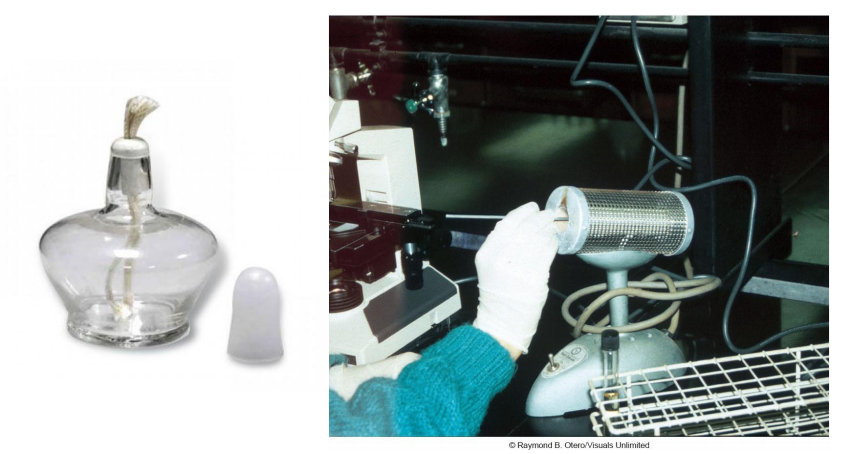
Radiation
1. Ultraviolet (UV) Radiation
mutations — death
causes formation of thymine dimers in DNA
requires direct exposure on microbial surface
Wavelength of 260 is most bactericidal (DNA absorbs)
Causes thymine dimers preventing replication and transcription
UV limited to surface sterilization because it does not penetrate glass, dirt films, water, and other substances
2. Ionizing Radiation 电离辐射
x-rays and gamma rays
mutations — death (sterilization)
disrupts chemical structure of many molecules, including DNA and proteins
Gamma radiation penetrates deep into objects
Destroys bacterial endospores
Used for sterilization and pasteurization of antibiotics, hormones, plastic disposable supplies, and food
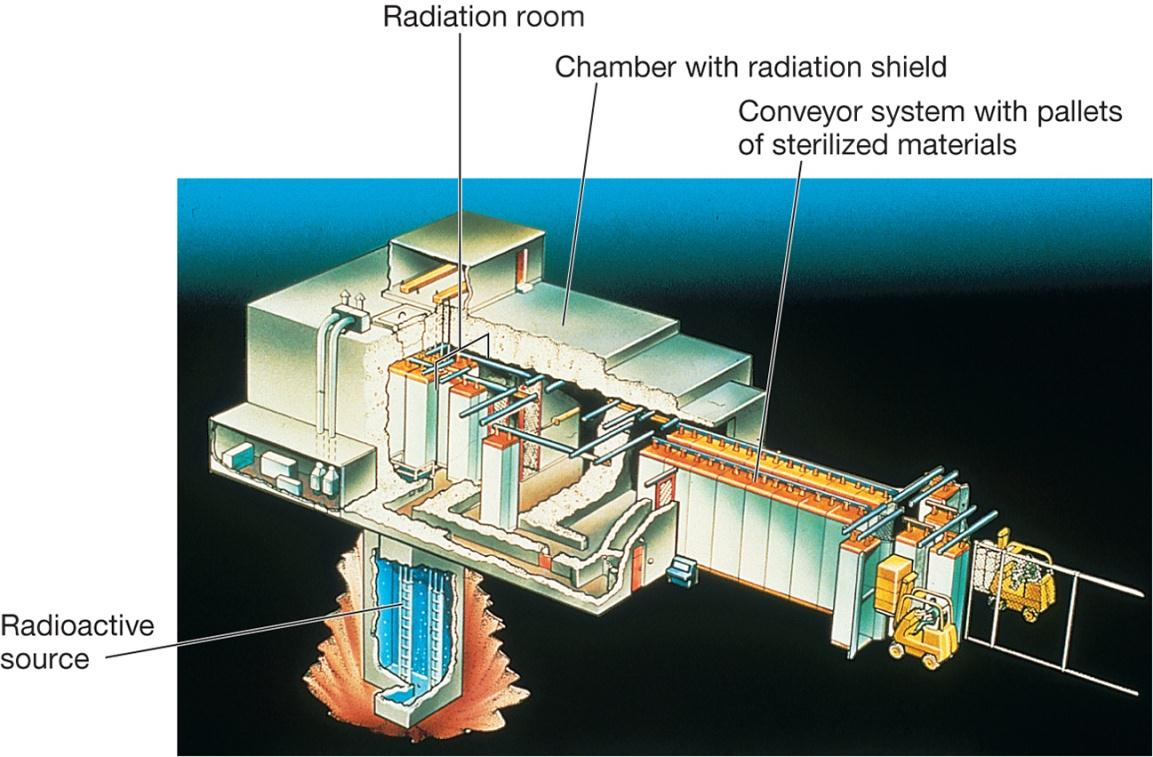
3. Visible Light
at high intensities generates singlet oxygen($^{1}O_{2}$)
powerful oxidizing agent
carotenoid (类胡萝卜素) pigments
protect many light-exposed microorganisms from photooxidation (光氧化(作用))
四、Chemical Agents
Aldehydes 醛类

Commonly used agents are formaldehyde(甲醛) and glutaraldehyde(戊二醛)
Highly reactive molecules
Sporicidal(杀孢子的) and can be used as chemical sterilants
Combine with and inactivate nucleic acids and proteins
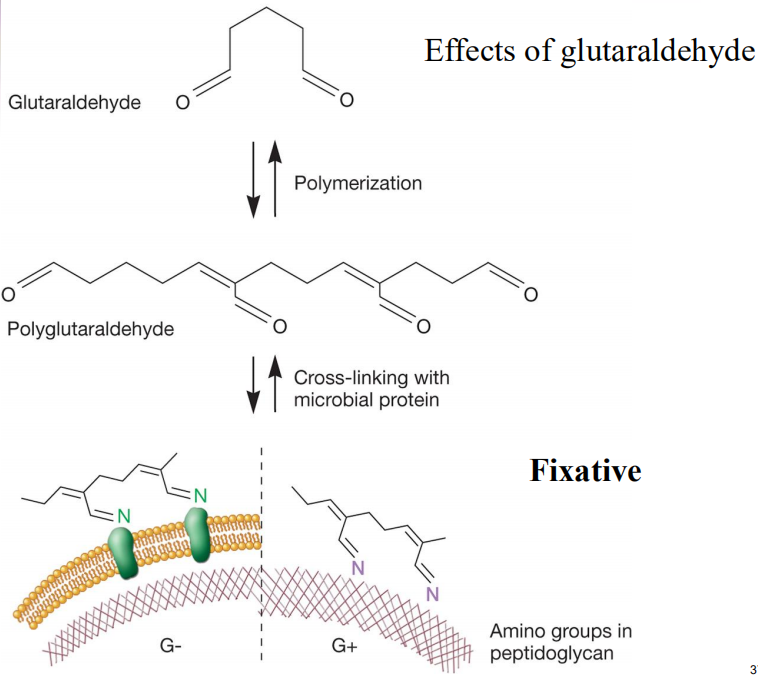
Sterilizing Gases 消毒气体

Used to sterilize heat-sensitive materials
Combine with and inactivate DNA and proteins
Microbicidal and sporicidal
Heavy Metals 重金属
e.g., ions of mercury, silver, arsenic, zinc, and copper
Combine with and inactivate proteins; may also precipitate proteins
Effective but usually toxic
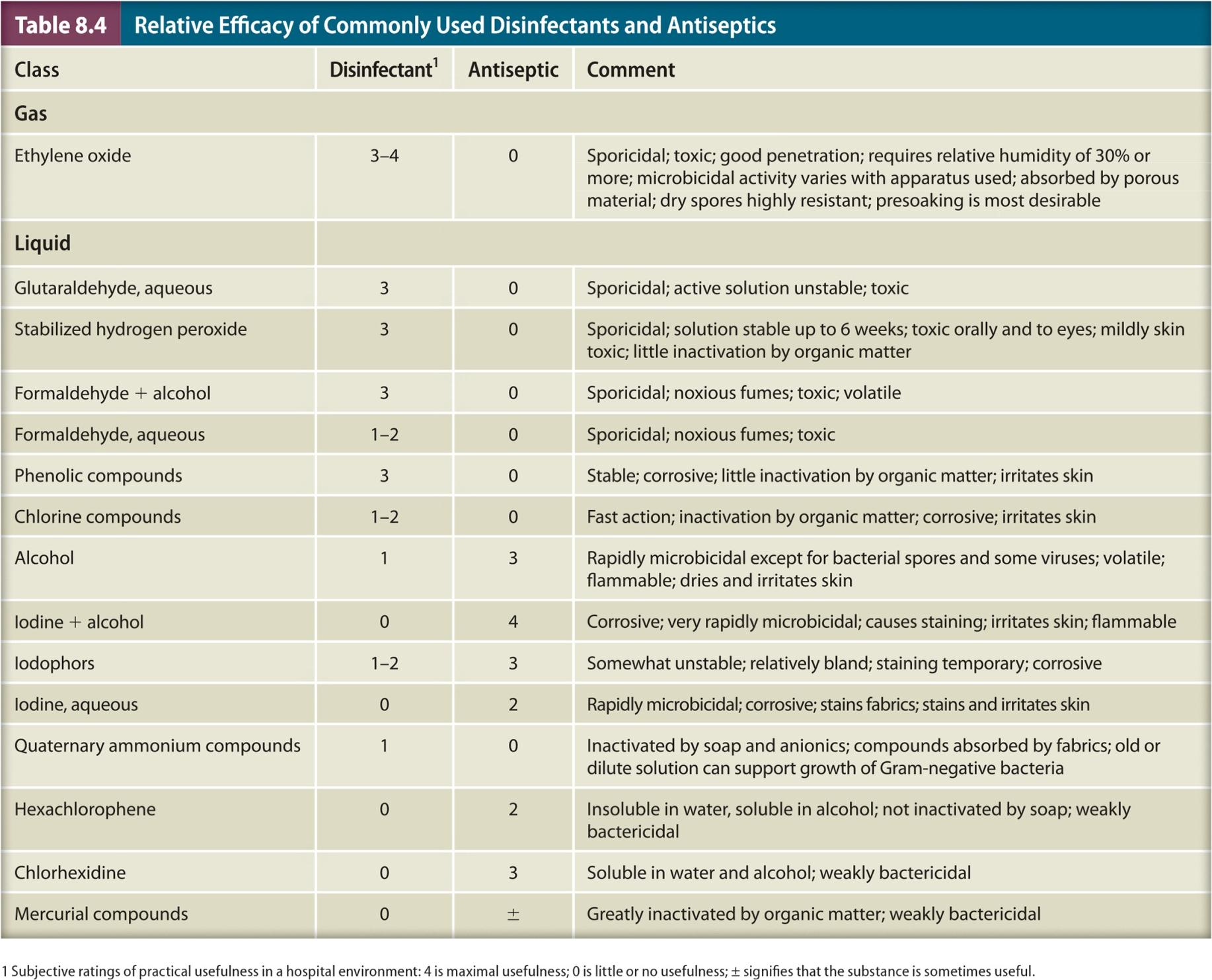
五、Biological Control of Microorganisms
Emerging field showing great promise
Natural control mechanisms
viral-mediated lysis using pathogen specific bacteriophage
toxin-mediated killing using bacteriocins
predation by Bdellovibrio 蛭弧菌属

Biofilms
Biofilm are complex, slime-encased communities of microbes.
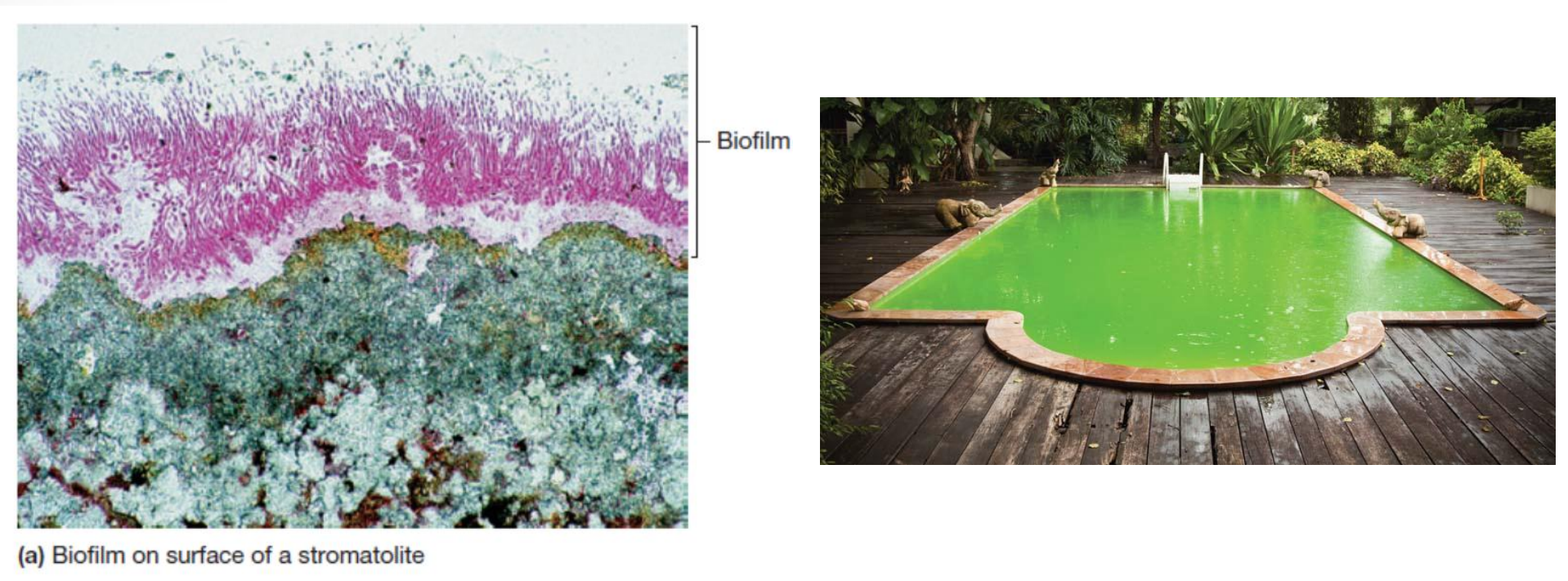
1. Forming Process
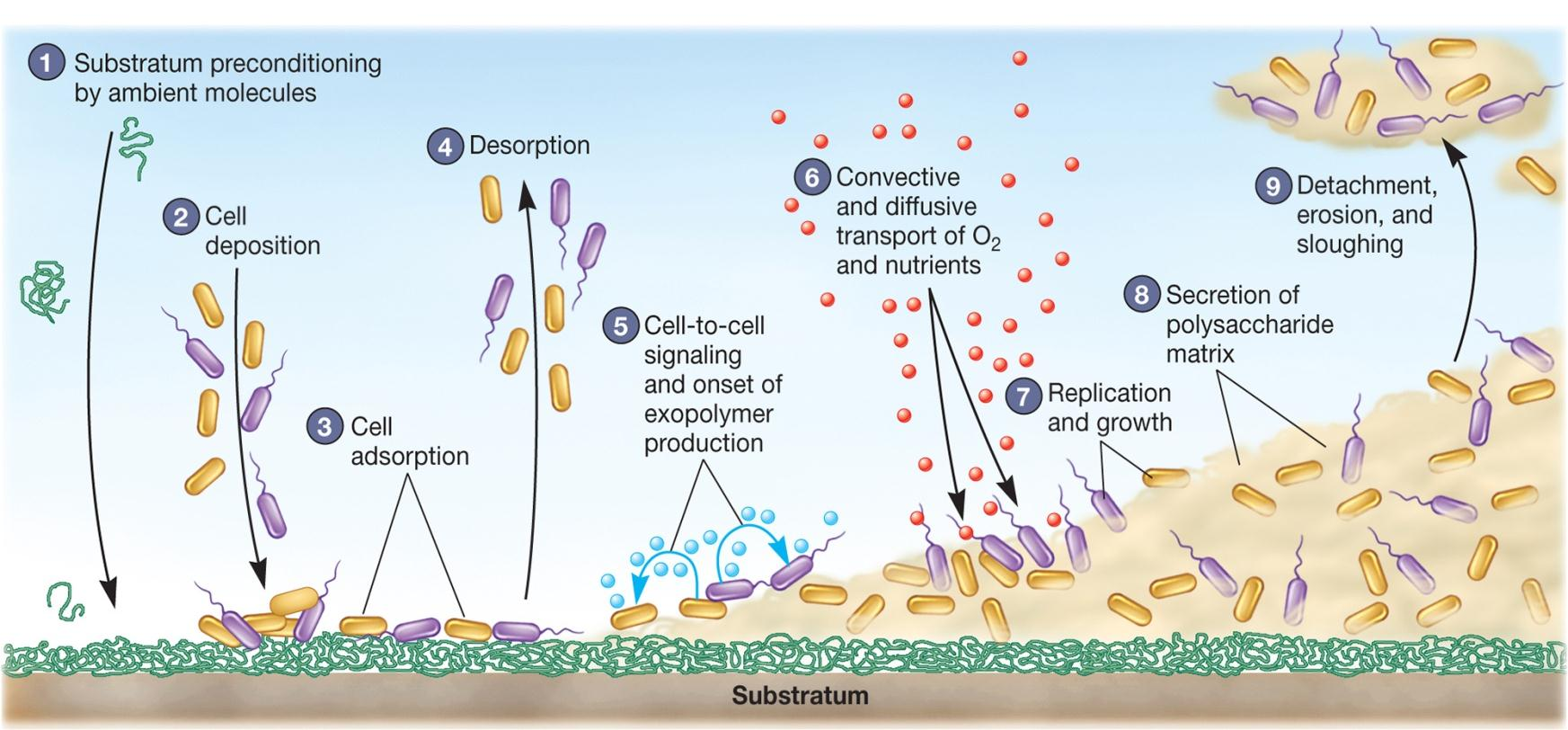
- Substratum preconditioning by ambient molecules
- Cell deposition 细胞沉积
- Cell adsorptipn
- Desorption
- Cell-to-cell signaling and onset of exopolymer production 细胞间的信号传导和外聚物的产生
- Convective and diffusive transport of O2 and nutrients
- Replication and growth
- Secretion of polysaccharide matrix
- Detachment, erosion, and sloughing 分离,腐蚀和脱落
2. Biofilm Heterogeneity 生物膜异质性
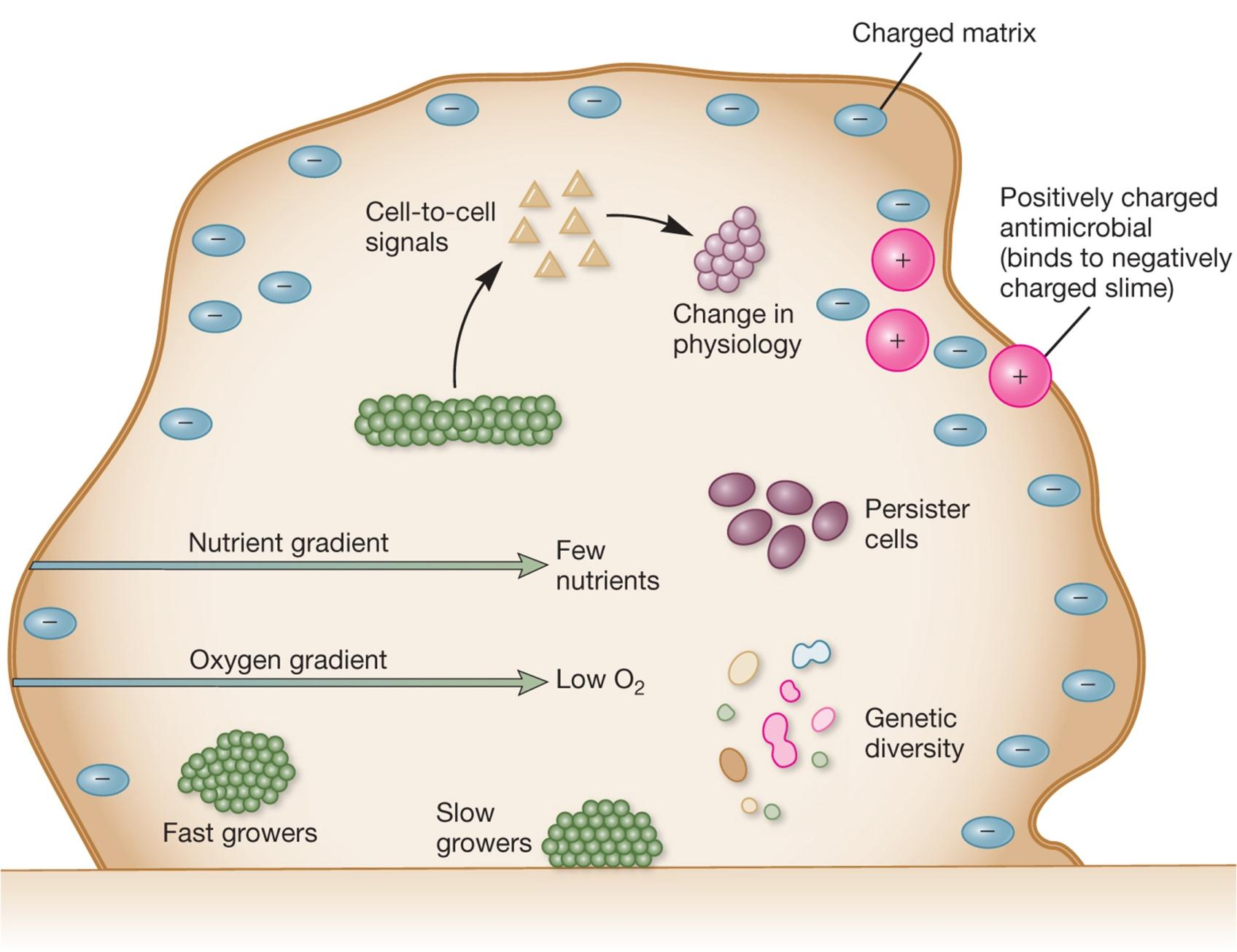
3. Cell-to-Cell Communication – Quorum Sensing (群体感应)
Introduction
Bacterial cells in biofilms communicate in a density-dependent manner called quorum sensing
Produce small proteins that increase in concentration as microbes replicate and convert a microbe to a competent state
- DNA uptake occurs, bacteriocins are released
Acylhomoserine lactone (AHL) is an autoinducer molecule produced by many gram-negative organisms
diffuses across plasma membrane
once inside the cell, induces expression of target genes regulating a variety of functions
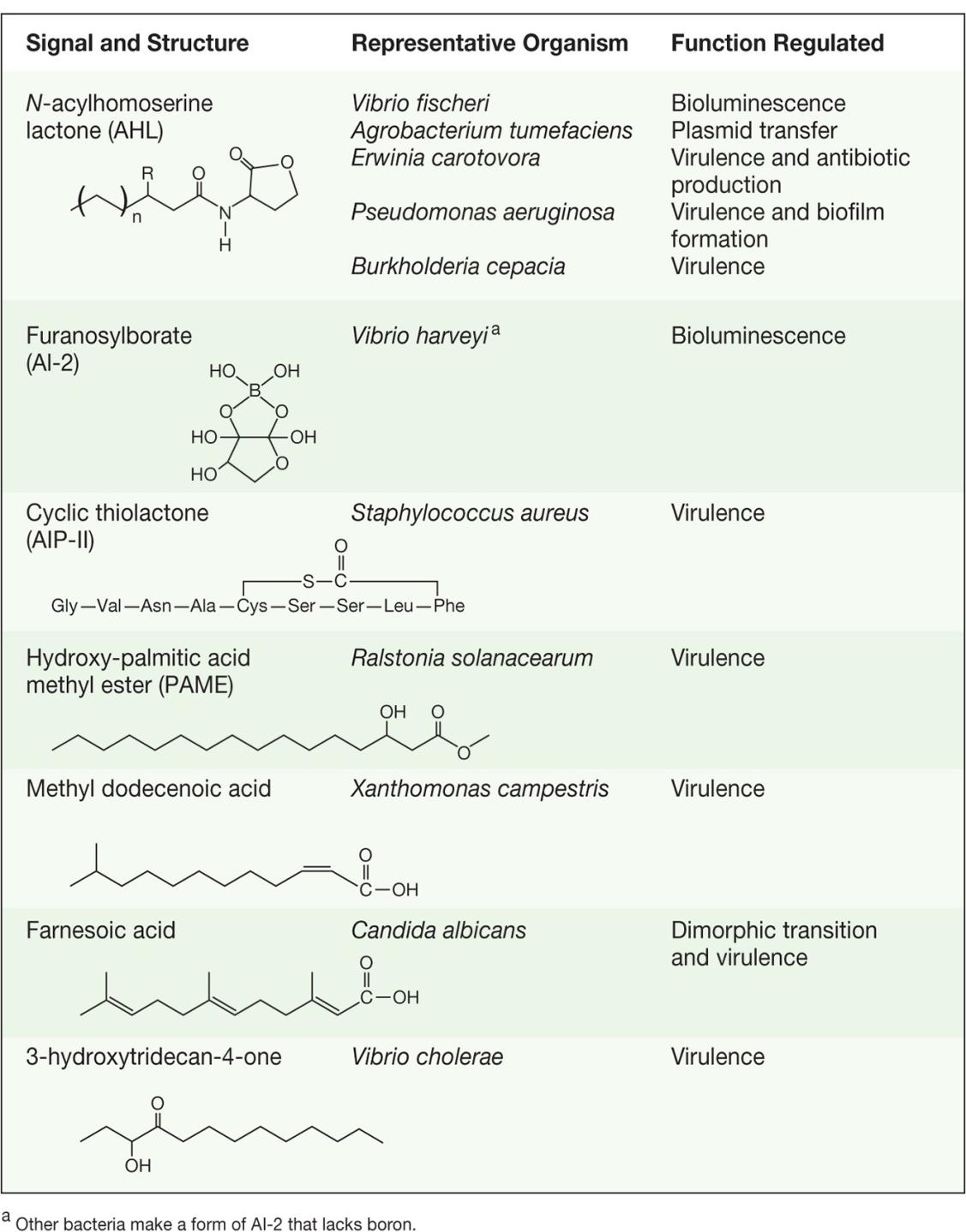
Quorum Sensing Systems
Processes regulated by quorum sensing involve host-microbe interactions
symbiosis – Vibrio fischeri and bioluminescence in squid
pathogenicity and increased virulence factor production
DNA uptake for antibiotic resistance genes
六、Laboratory culture of cellular microbes
Types of Culture Media
| Basis for Classification | Types |
|---|---|
| Chemical composition | Defined (synthetic), complex |
| Physical nature | Liquid, semisolid, solid |
| Function | Supportive (general purpose), enriched, selective, differential |
1. Classified by Chemical Composition
Defined or Synthetic Media
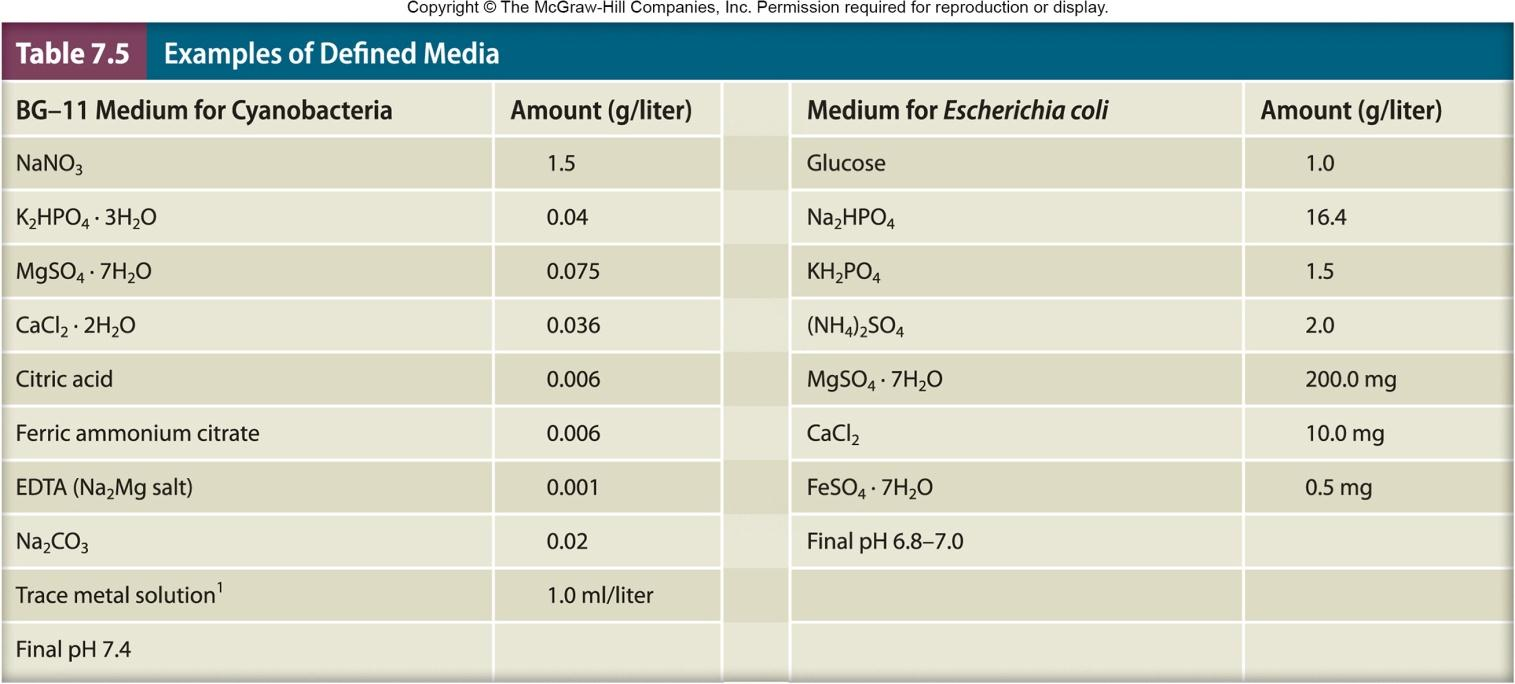
Complex Media
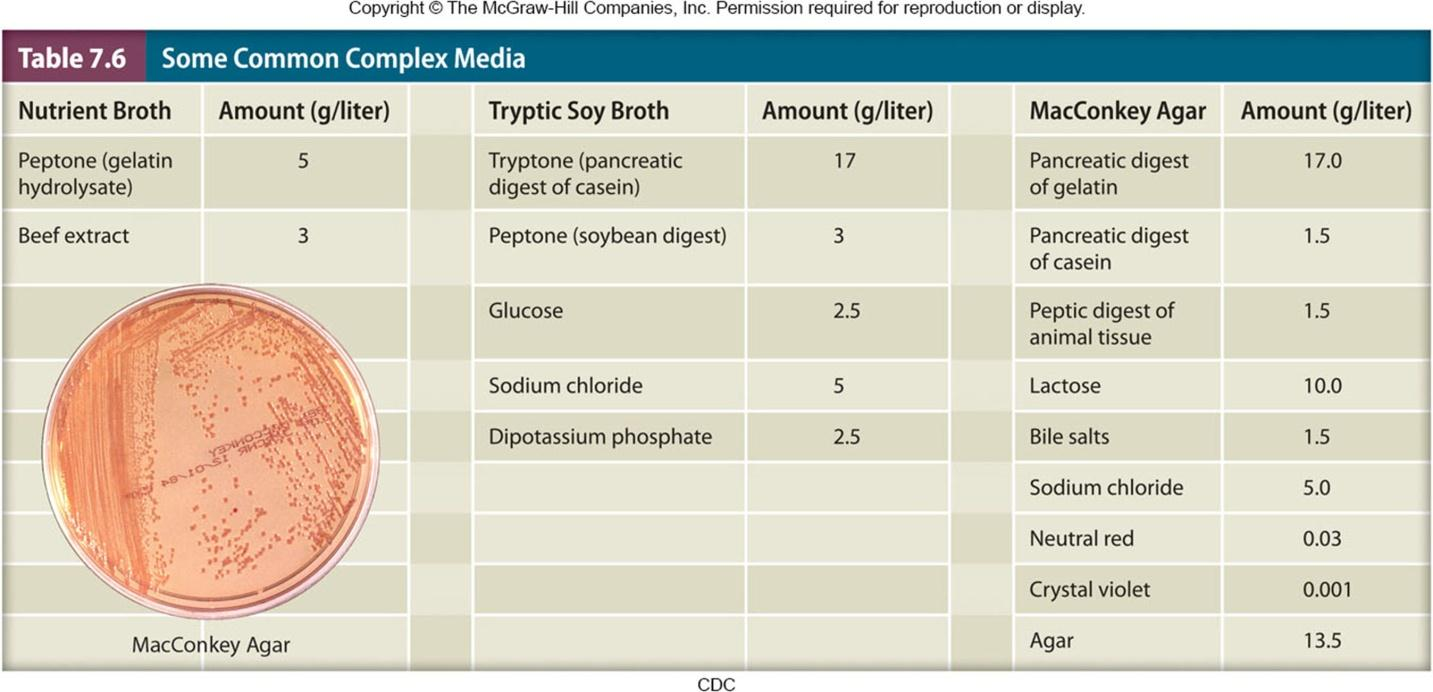
2. Classidied by Functions
Supportive or General Purpose Media
Supportive or general purpose media (e.g. TSA)
- support the growth of many microorganisms
Enriched Media
Enriched media (e.g. blood agar)
- general purpose media supplemented by blood or other special nutrients
Selective Media
favor the growth of some microorganisms and inhibit growth of others
• e.g., MacConkey agar
- selects for gram-negative bacteria
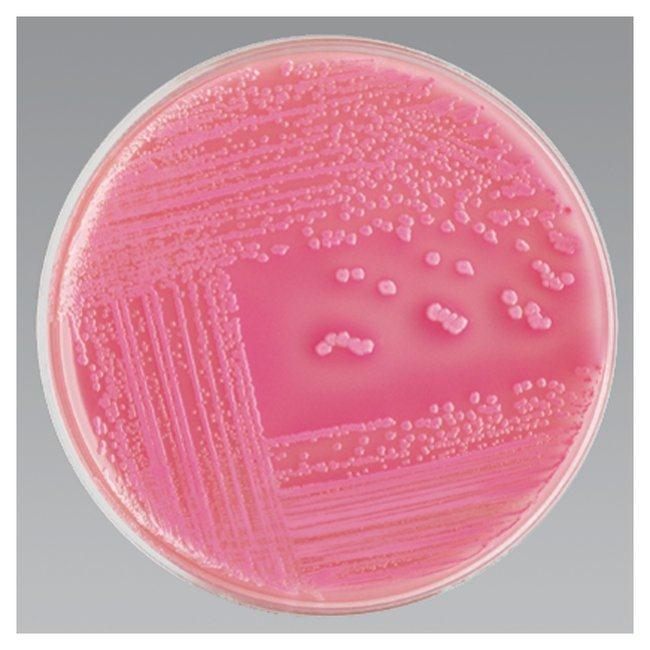
Differential Media
Distinguish between different groups of microorganisms based on their biological characteristics
e.g., blood agar
- hemolytic versus nonhemolytic bacteria
• e.g., MacConkey agar
- lactose fermenters versus nonfermenters
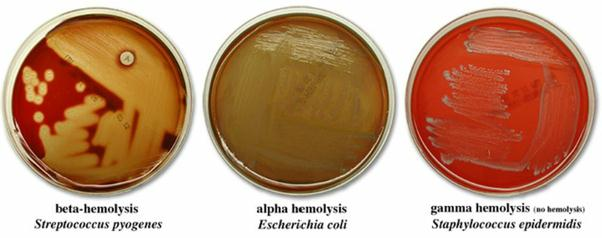
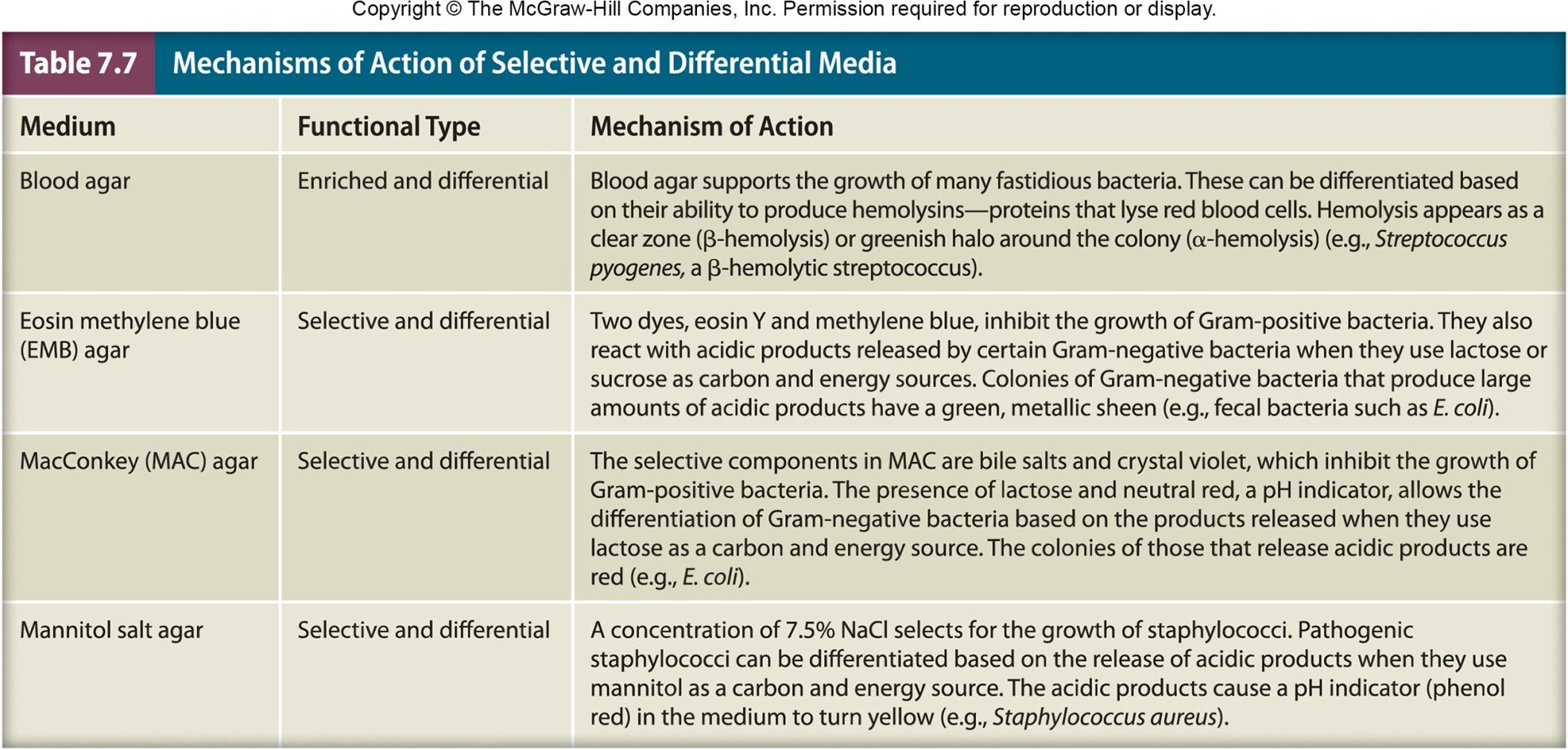
Isolation of Pure Cultures
Population of cells arising from a single cell developed by Robert Koch
Streak plate, spread plate, and pour plate are techniques used to isolate pure cultures
1. Streak Plate
Spreading a mixture of cells on an agar surface so that individual cells are well separated from each other
- involves use of bacteriological loop
Each cell can reproduce to form a separate colony
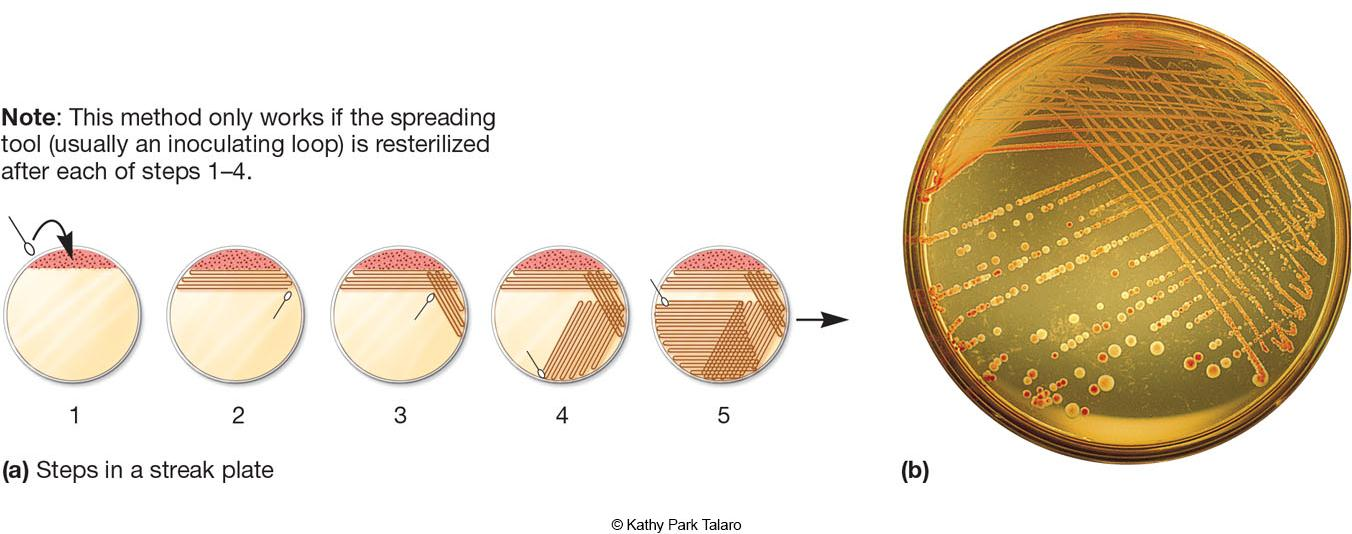
2. Spread Plate
small volume of diluted mixture containing approximately 30–300 cells is transferred
spread evenly over surface with a sterile bent rod
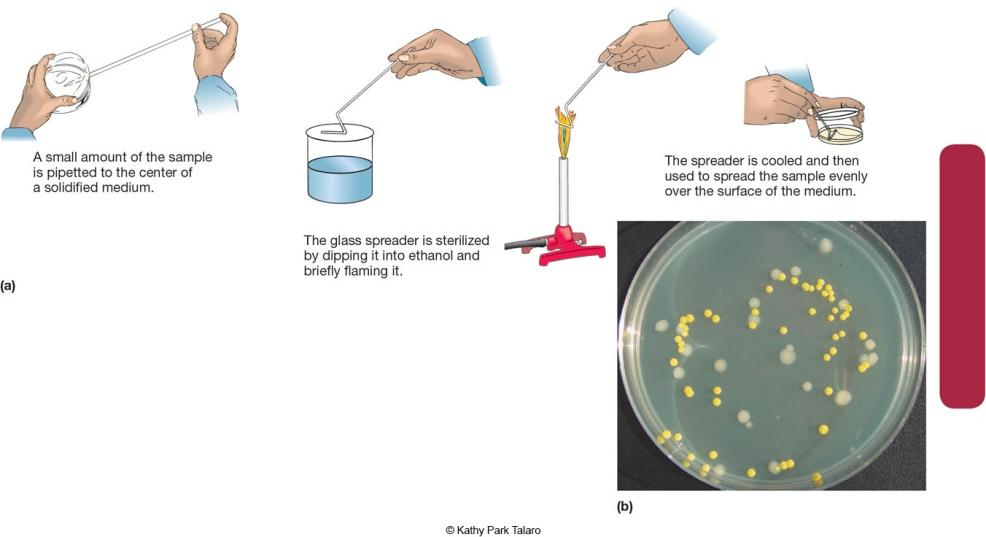
3. Pour Plate
sample is serially diluted
diluted samples are mixed with liquid agar
mixture of cells and agar are poured into sterile culture dishes
Both spread and pour plate may be used to determine the number of viable microorganisms in an original sample
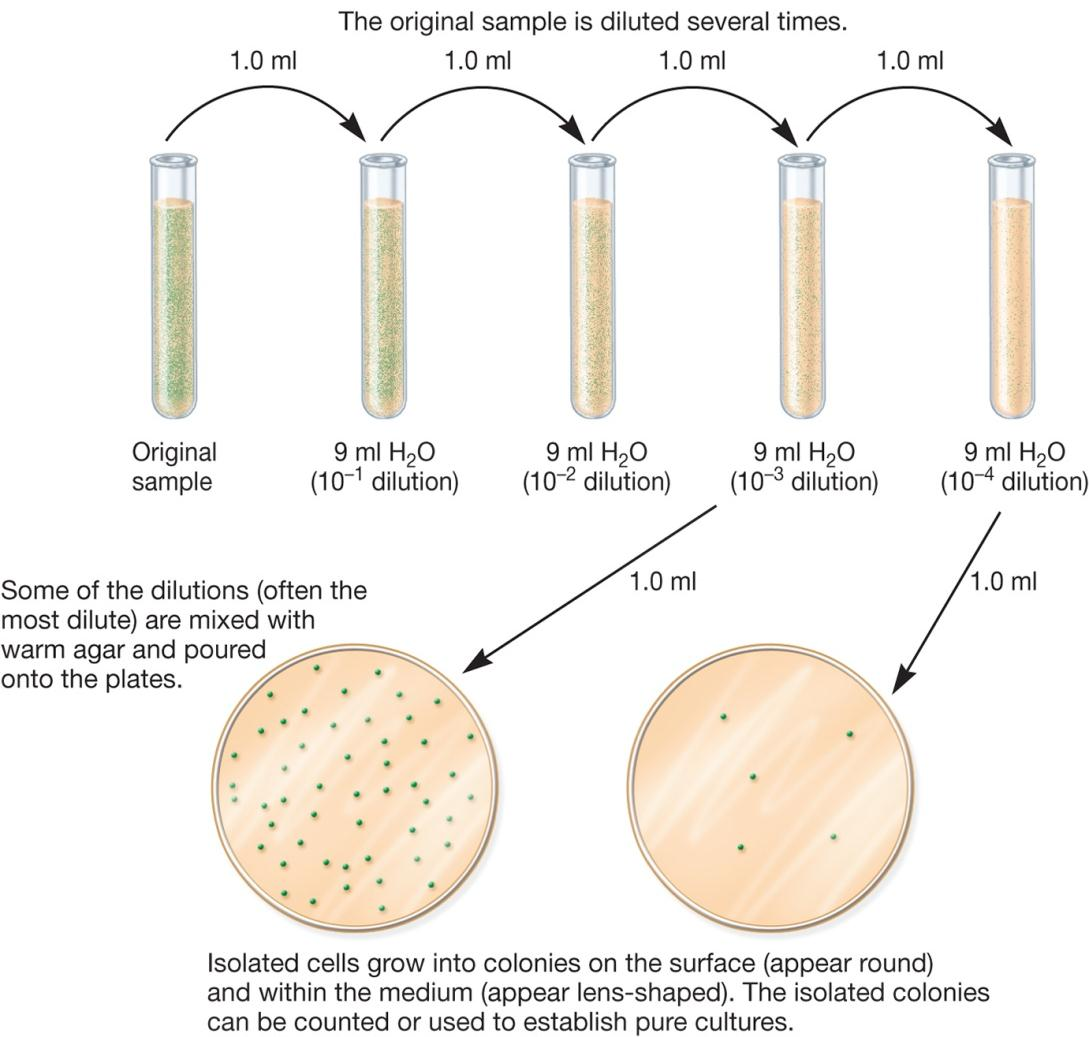
Microbial Growth on Solid Surfaces
Colony characteristics that develop when microorganisms are grown on agar surfaces aid in identification
Differences in growth rate from edges to center is due to
oxygen, nutrients, and toxic products
cells may be dead in some areas
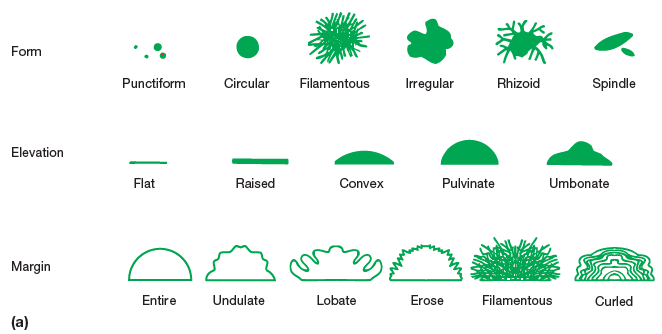
The Growth Curve
Growth refers to population growth rather than growth of individual cells
Usually plotted as logarithm of cell number versus time and has four/five distinct phases
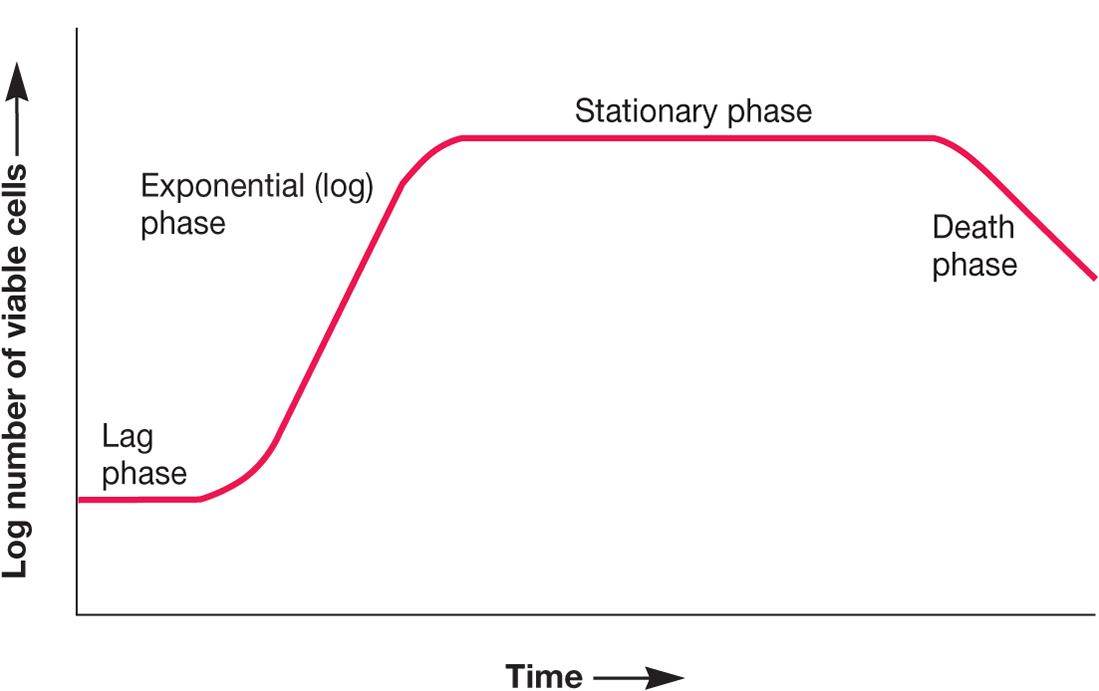
1. Lag Phase
Cell synthesizing new components
e.g., to replenish spent materials
e.g., to adapt to new medium or other conditions
Varies in length
- in some cases can be very short or even absent
2. Exponential (Log) Phase
Also called log phase
Rate of growth and division is constant and maximal (balanced growth)
Population is most uniform in terms of chemical and physical properties during this phase
3. Unbalanced Growth
Rates of synthesis vary relative to each other
Occurs under a variety of conditions
change in environmental conditions
change in nutrient levels
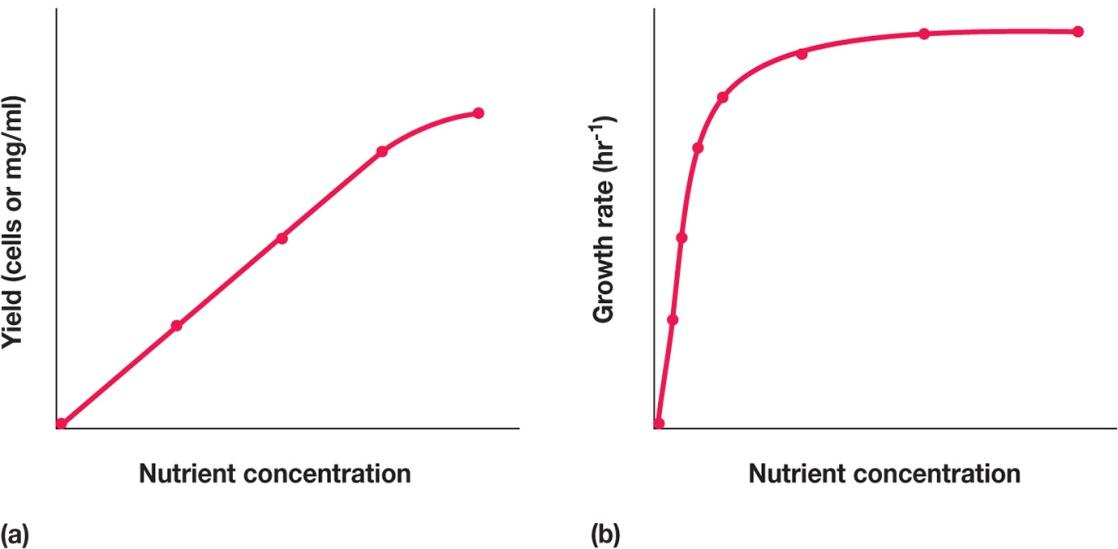
4. Stationary Phase
Closed system population growth eventually ceases, total number of viable cells remains constant
- active cells stop reproducing or reproductive rate is balanced by death rate
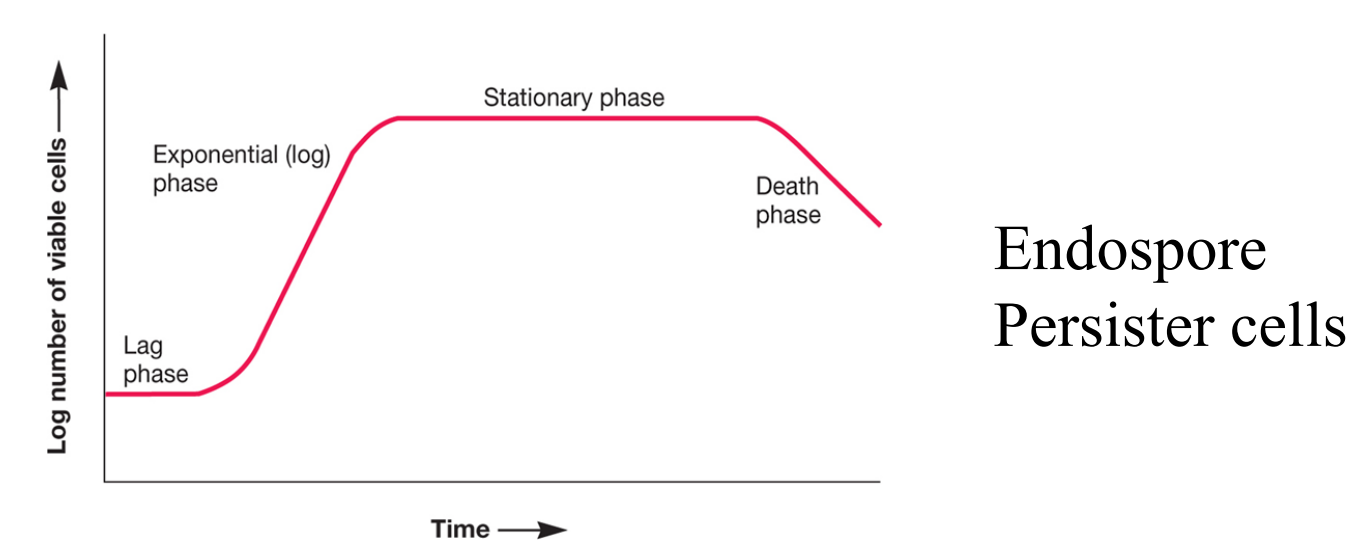
Possible Reasons For Stationary Phase
Nutrient limitation
Limited oxygen availability
Toxic waste accumulation
Critical population density reached
5. Prolonged Decline in Growth 增长持续下降
Process marked by successive waves (连续波) of genetically distinct variants
Bacterial population continually evolves
Natural selection occurs
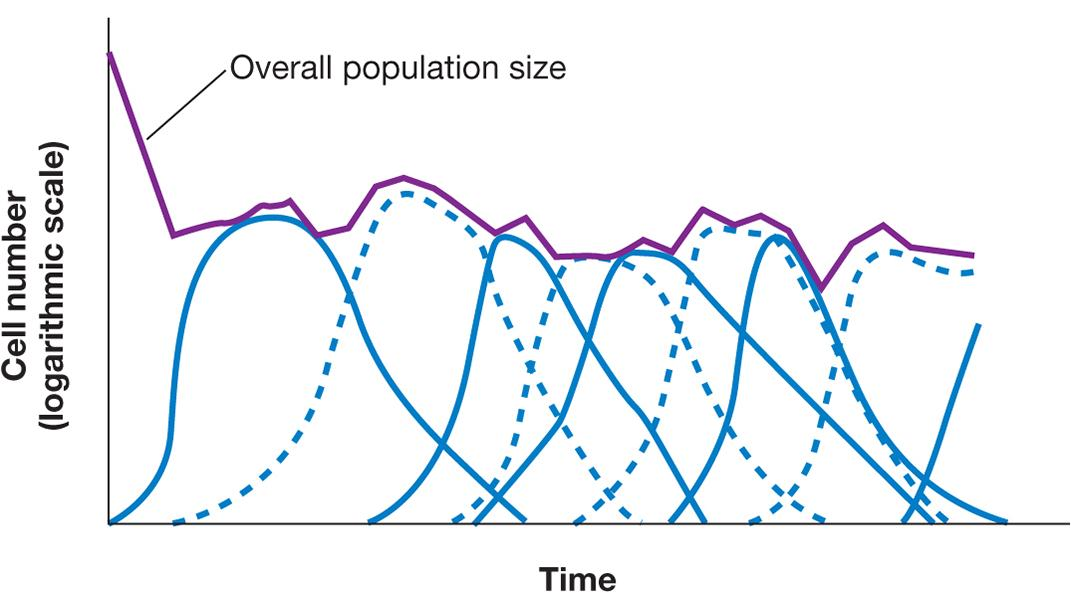
6. Growth In A Closed System
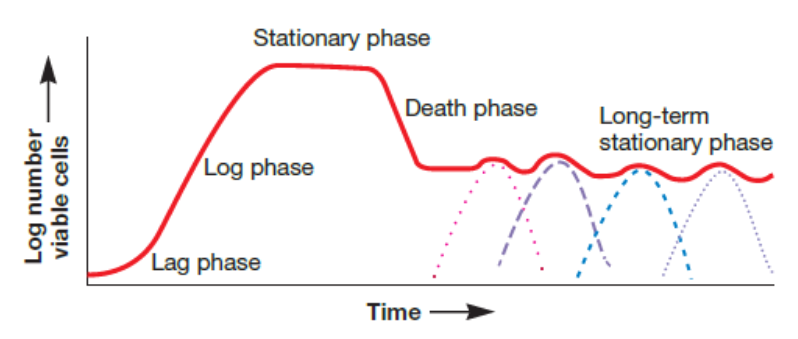
Mathematics of Growth
Generation (doubling) time
time required for the population to double in size
varies depending on species of microorganism and environmental conditions
range is from 10 minutes for some bacteria to several days for some eukaryotic microorganisms
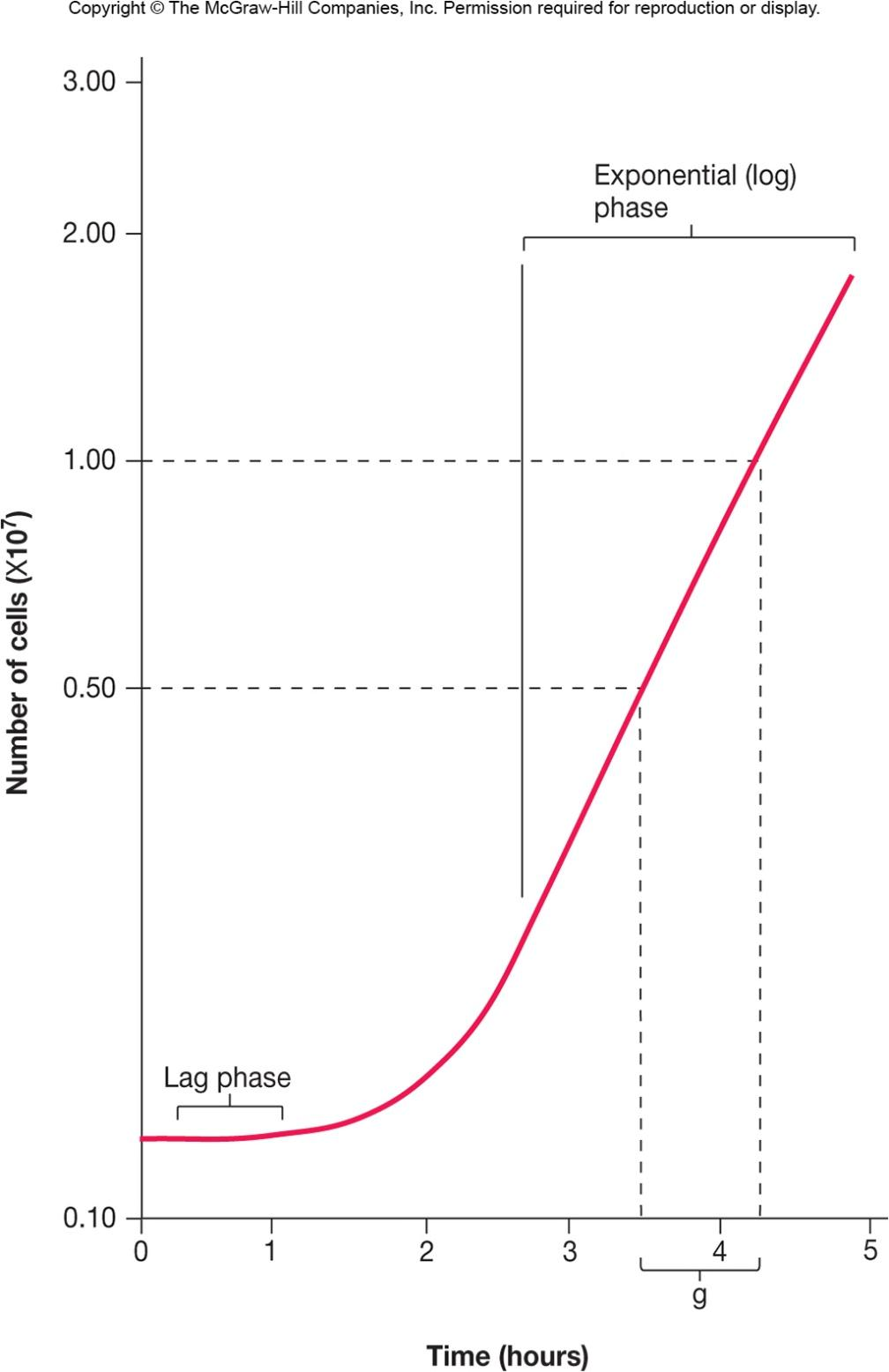
七、Measurement of microbial population size
Direct Measurement
Direct cell counts
counting chambers
electronic counters: flow cytometry
on membrane filters
1. Counting Chambers 计数室
Easy, inexpensive, and quick
Useful for counting both eukaryotes and prokaryotes
Cannot distinguish living from dead microbial cells
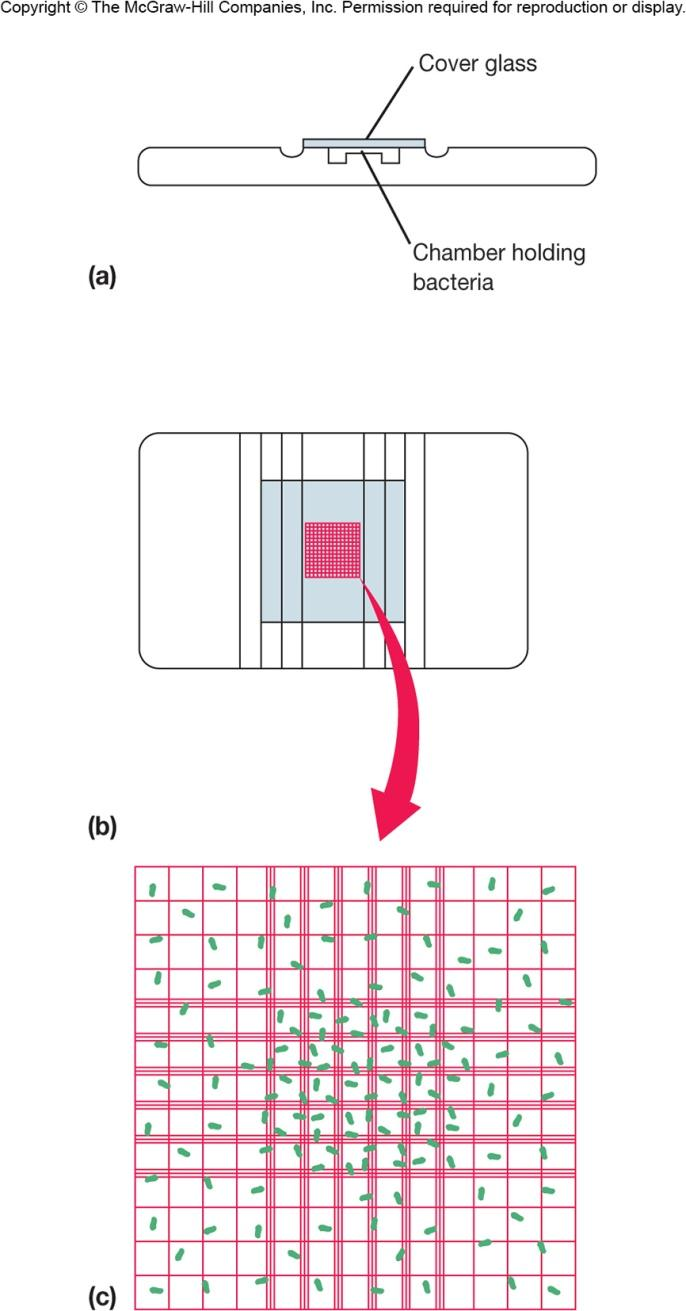
2. Flow Cytometry 流式细胞(计量)术
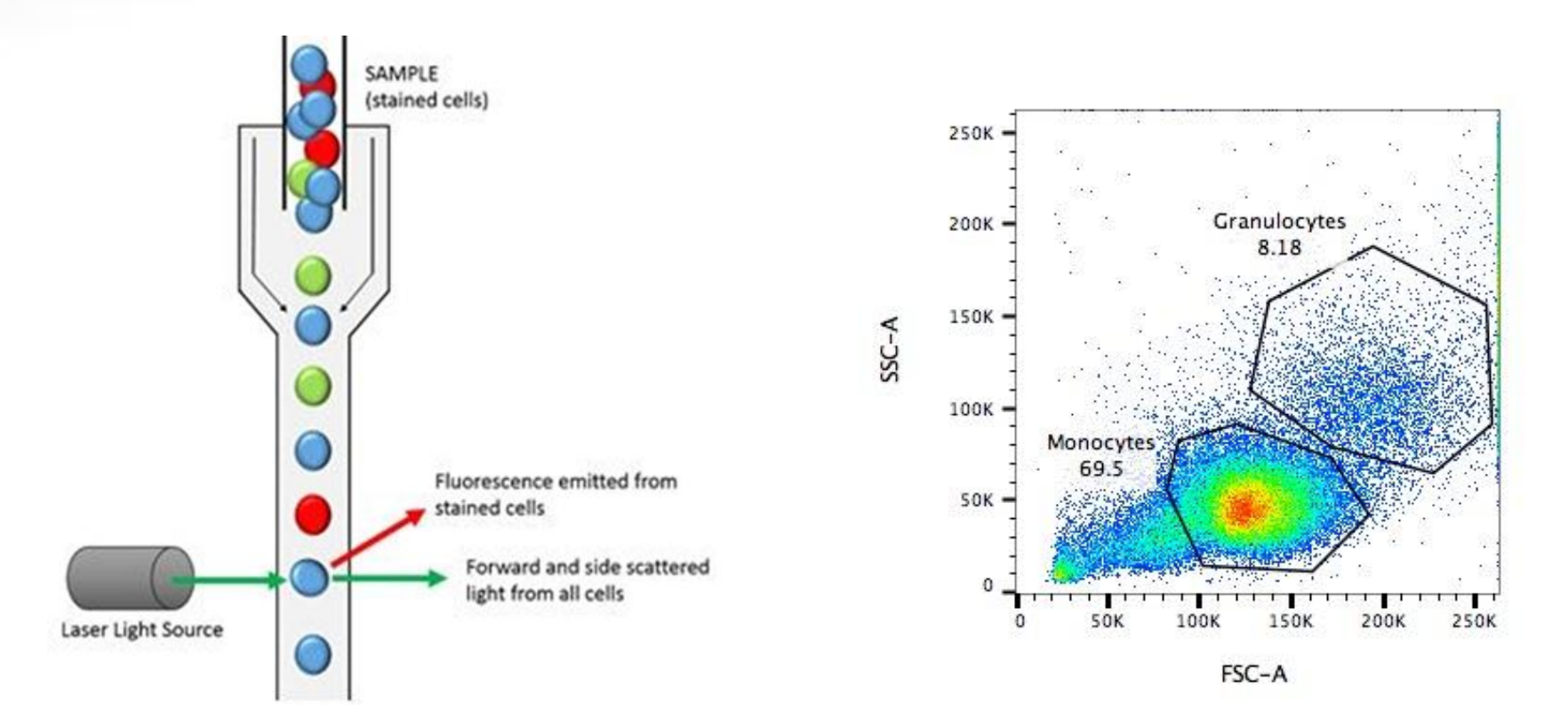
3. Membrane Filters
Cells filtered through special membrane that provides dark background for observing cells
Cells are stained with fluorescent dyes
Useful for counting bacteria
With certain dyes, can distinguish living from dead cells
Viable counting (活菌计数): Alive or dead?
Whether or not a cell is alive or dead isn’t always clear cut in microbiology
- Cells can exist in a variety of states between ‘fully viable’ and ‘actually dead’
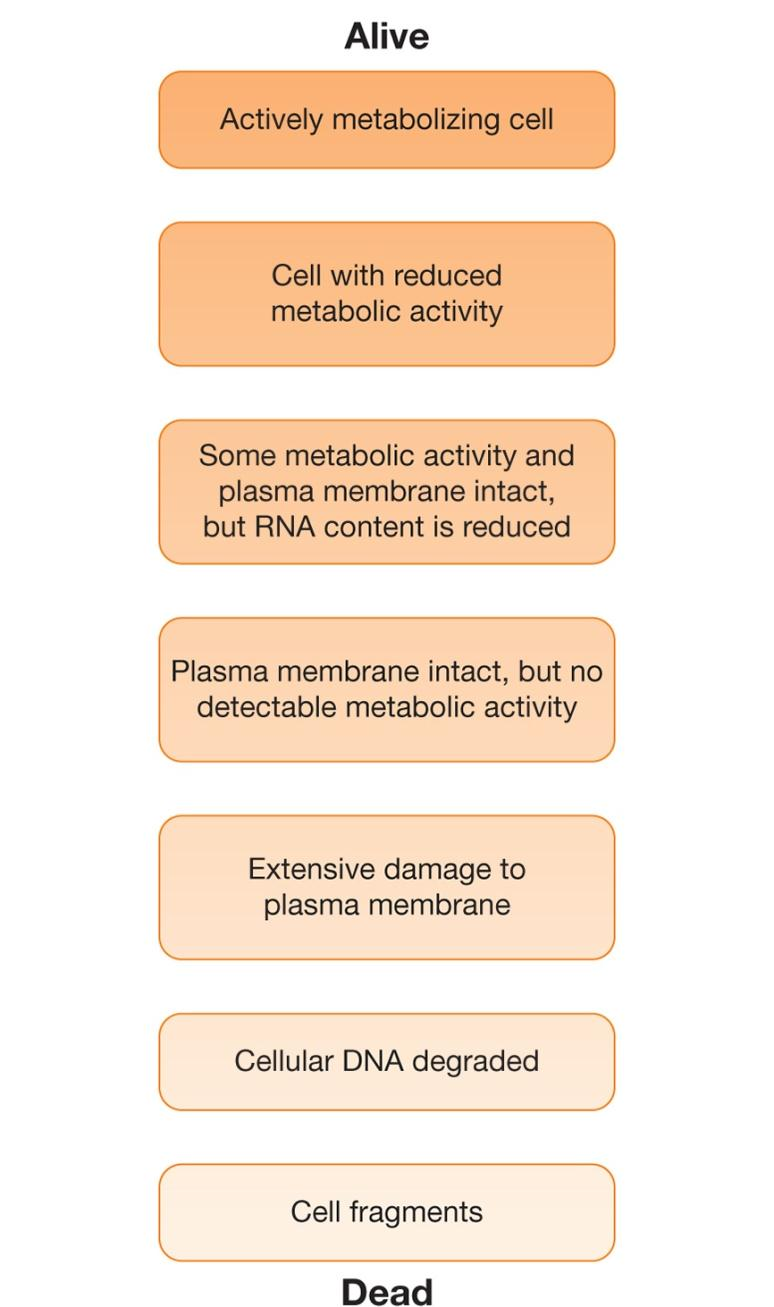
Viable Counting Methods
1. Spread and pour plate techniques
diluted sample of bacteria is spread over solid agar surface or mixed with agar and poured into Petri plate
after incubation the numbers of organisms are determined by counting the number of colonies multiplied by the dilution factor
results expressed as colony forming units (CFU)
2. Membrane filter technique
bacteria from aquatic samples are trapped on membranes
membrane soaked in culture media
colonies grow on membrane
colony count determines # of bacteria in sample

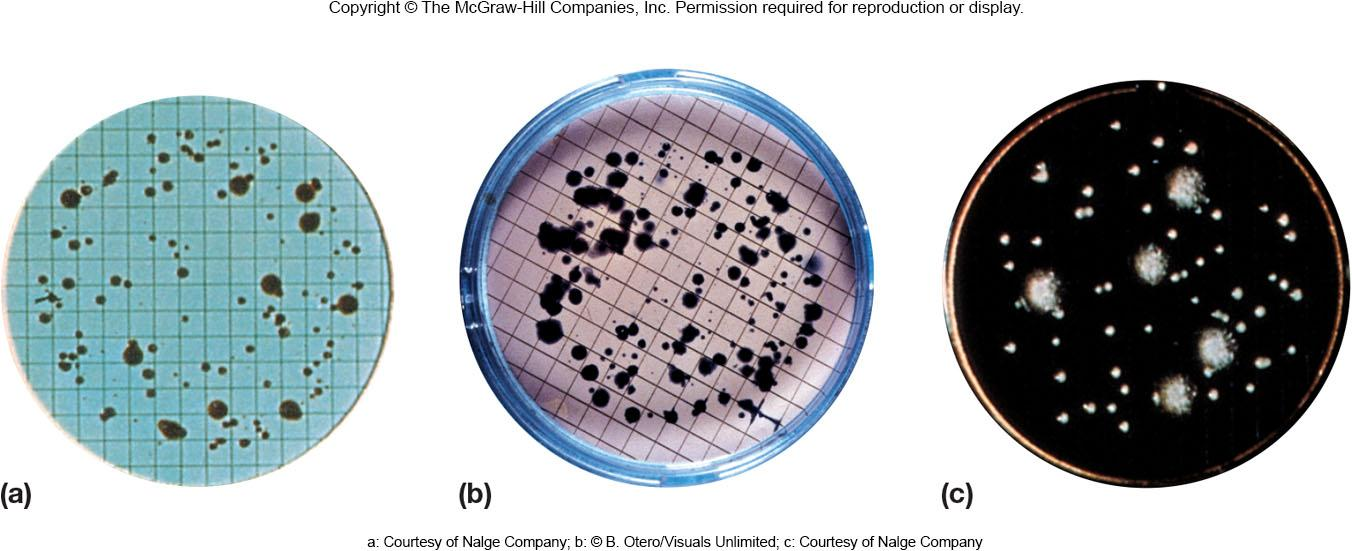
3. Turbidity – Turbidometric measures (light scattering)
quick, easy, and sensitive
Dilutions are made and added to suitable media
Turbidity determined to yield the most probable number (MPN)
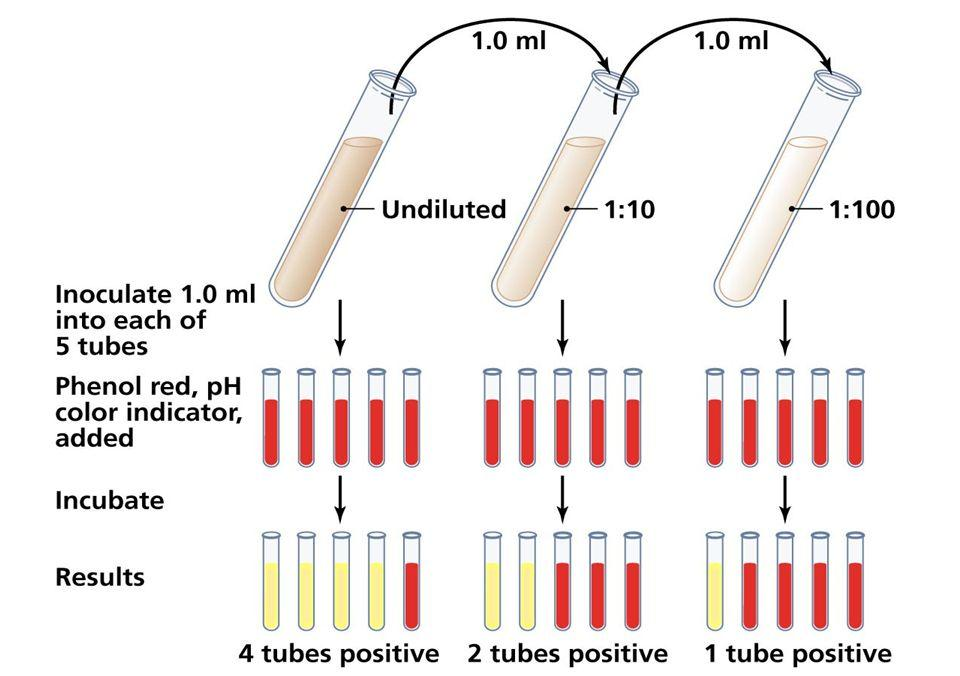
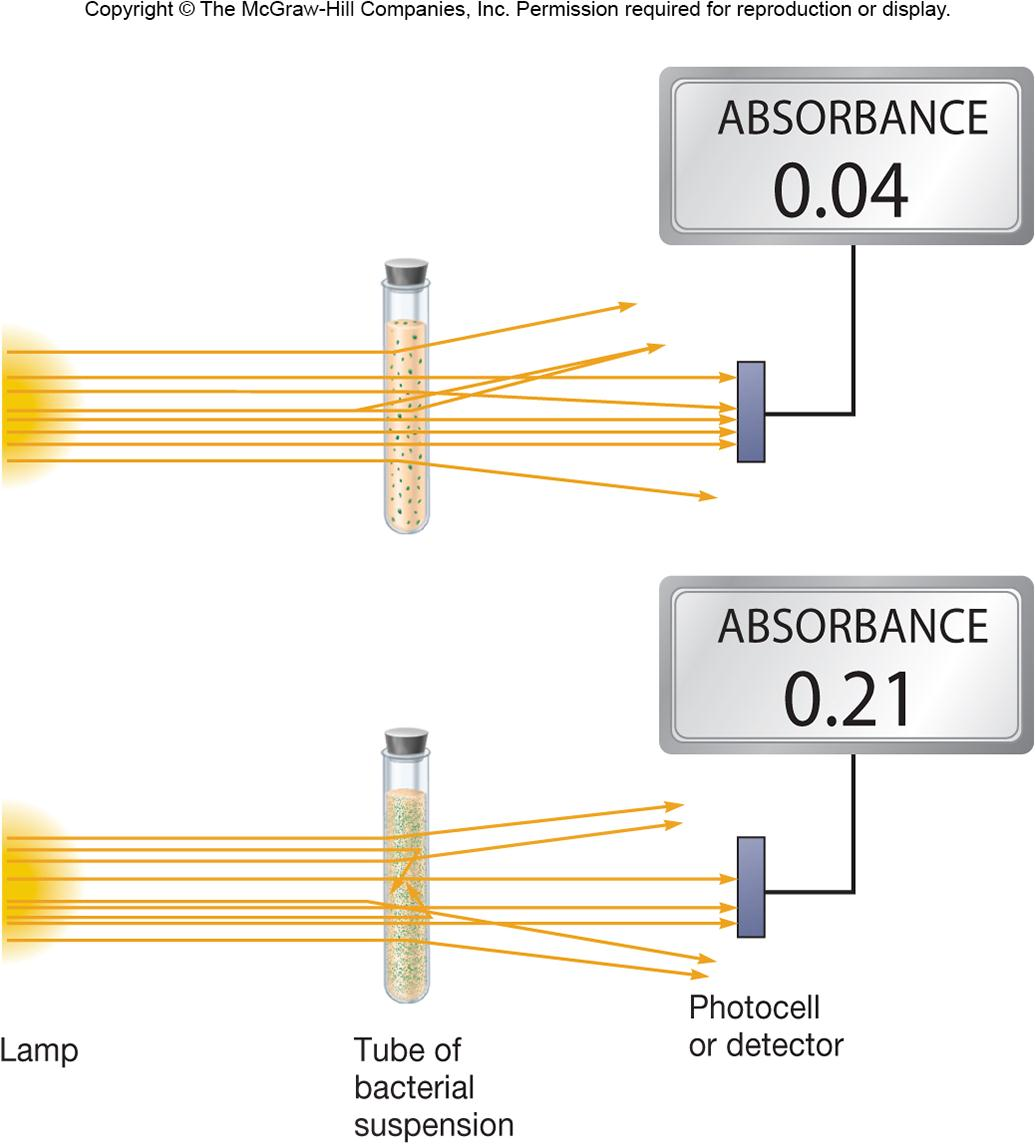
4. Dry weight
time consuming and not very sensitive
5. Quantity of a particular cell constituent
e.g., protein, DNA, ATP, or chlorophyll
useful if amount of substance in each cell is constant
八、The Continuous Culture of Microorganisms
Maintains cells in log phase at a constant biomass concentration for extended periods
Achieved using a continuous culture system
continual provision of nutrients
continual removal of wastes
The Chemostat 恒化器
Rate of incoming medium = rate of removal of medium from vessel
An essential nutrient is in limiting quantities
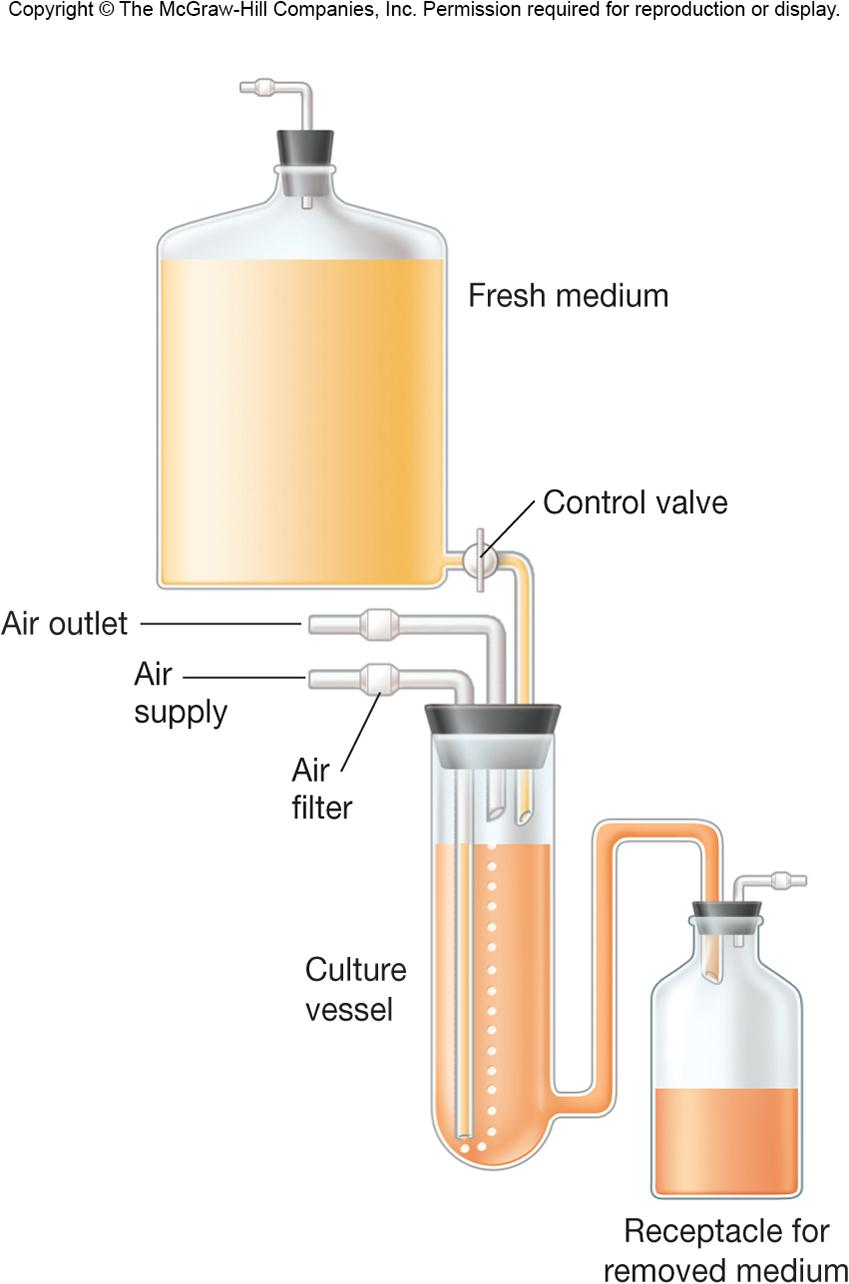
Dilution Rate and Microbial Growth
Dilution rate – rate atwhich medium flowsthrough vesselrelative to vessel size
note: cell densitymaintained at widerange of dilutionrates and chemostatoperates best at low dilution rate
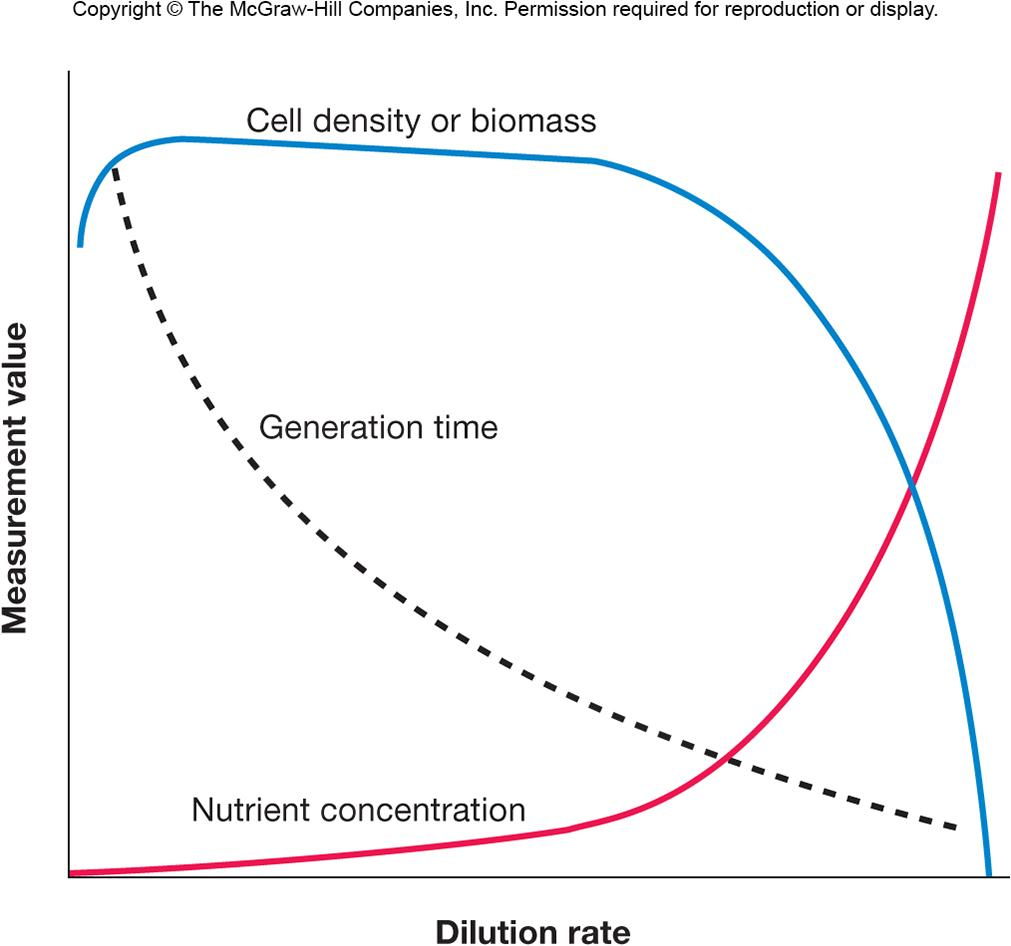
The Turbidostat 恒浊器
regulates the flow rate of media through vessel to maintain a predetermined turbidity or cell density
turbidostat operates best at high dilution rates
no limiting nutrient
dilution rate varies
